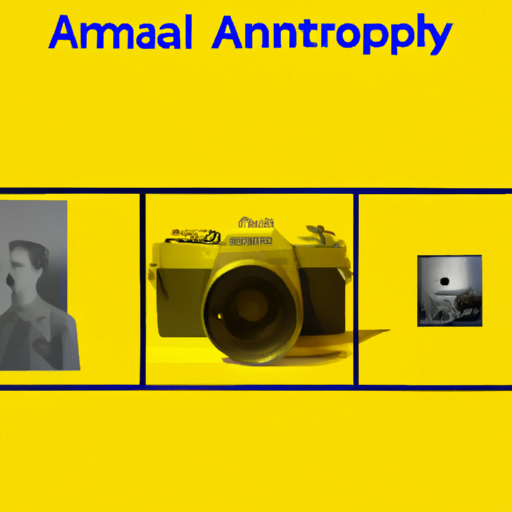
-
Table of Contents
- Innovative Album Cover Design: Evolving Artistic Expressions
- The Importance of Album Cover Design
- The Evolution of Album Cover Design
- The Psychedelic Era
- The Minimalist Approach
- The Digital Age
- The Role of Technology in Album Cover Design
- The Impact of Album Cover Design on Music Consumption
- The Future of Album Cover Design
- Conclusion
Innovative Album Cover Design: Evolving Artistic Expressions

Album cover design has always been an integral part of the music industry. It serves as the visual representation of an artist’s work and plays a crucial role in capturing the attention of potential listeners. Over the years, album cover design has evolved significantly, reflecting the changing trends in music and artistic expressions. In this article, we will explore the innovative approaches and techniques used in album cover design, and how it has transformed into a form of art in itself.
The Importance of Album Cover Design
Album cover design is more than just a marketing tool; it is a powerful medium for artistic expression. A well-designed album cover can evoke emotions, convey the artist’s message, and create a lasting impression on the audience. It serves as a visual gateway to the music, enticing listeners to explore the artist’s work.
Furthermore, album covers have become iconic symbols associated with certain artists or genres. Think of The Beatles’ “Abbey Road” or Pink Floyd’s “The Dark Side of the Moon.” These album covers have become cultural touchstones, instantly recognizable and forever linked to the music they represent.
The Evolution of Album Cover Design
Album cover design has come a long way since its inception. In the early days of vinyl records, album covers were often simple and straightforward, featuring the artist’s name and the album title. However, as music became more diverse and experimental, so did the album cover designs.
The Psychedelic Era
In the 1960s and 1970s, album cover design underwent a psychedelic revolution. Artists like Pink Floyd, The Jimi Hendrix Experience, and Jefferson Airplane embraced bold and trippy visuals that mirrored the psychedelic nature of their music. These album covers often featured vibrant colors, intricate illustrations, and mind-bending optical illusions.
One notable example is Pink Floyd’s “The Dark Side of the Moon” album cover, designed by Storm Thorgerson and Hipgnosis. The cover features a prism dispersing light into a spectrum of colors, symbolizing the album’s exploration of themes like time, madness, and the human condition. It perfectly captures the essence of the music and has become one of the most iconic album covers of all time.
The Minimalist Approach
In the 1980s and 1990s, album cover design took a minimalist turn. Influenced by the rise of punk and new wave music, artists began embracing simplicity and clean lines. This minimalist approach often involved using bold typography, monochromatic color schemes, and stark imagery.
An excellent example of this minimalist approach is Joy Division’s “Unknown Pleasures” album cover. Designed by Peter Saville, the cover features a series of white pulsar waves on a black background. Its simplicity and enigmatic nature perfectly complement the band’s post-punk sound and have made it an enduring symbol of the era.
The Digital Age
The advent of digital music and streaming platforms brought about new challenges and opportunities for album cover design. With the rise of digital downloads and streaming, album covers became smaller and viewed primarily on screens. This shift led to a renewed focus on creating visually striking and attention-grabbing designs that could stand out in a digital landscape.
One example of innovative album cover design in the digital age is Kanye West’s “My Beautiful Dark Twisted Fantasy.” Designed by George Condo, the cover features a controversial and provocative painting depicting Kanye West being straddled by a nude winged creature. The cover generated significant buzz and sparked discussions about the boundaries of artistic expression in the digital era.
The Role of Technology in Album Cover Design
Technology has played a significant role in shaping the evolution of album cover design. Advancements in printing techniques, graphic design software, and digital imaging have opened up new possibilities for artists and designers.
With the rise of digital design tools, artists can now experiment with different styles, textures, and effects more easily. They can manipulate images, create intricate illustrations, and combine various elements to create visually stunning album covers.
Furthermore, technology has also made it easier for artists to collaborate with designers and graphic artists from around the world. This global collaboration has led to the fusion of different artistic styles and cultural influences, resulting in more diverse and innovative album cover designs.
The Impact of Album Cover Design on Music Consumption
Album cover design not only serves as a visual representation of the music but also influences the way we perceive and consume music. A well-designed album cover can create anticipation and excitement, encouraging listeners to engage with the music on a deeper level.
Studies have shown that album cover design can significantly impact music sales and streaming numbers. A visually appealing and memorable album cover can attract more listeners and increase the chances of the music being discovered and shared.
Furthermore, album cover design can also shape our perception of the music itself. A dark and mysterious album cover may lead us to expect a certain type of music, while a bright and colorful cover may evoke feelings of joy and happiness. The album cover sets the tone and prepares us for the musical journey that awaits.
The Future of Album Cover Design
As technology continues to advance and music consumption habits evolve, the future of album cover design looks promising. Artists and designers will have even more tools and techniques at their disposal to create innovative and immersive album covers.
Virtual reality (VR) and augmented reality (AR) technologies hold great potential for album cover design. Imagine being able to step into a virtual world created by the album cover, where the music comes to life through interactive visuals and animations.
Furthermore, as streaming platforms become the primary mode of music consumption, album covers will need to adapt to the digital landscape. Dynamic and animated album covers that respond to the music and user interactions could become the norm, providing a more engaging and interactive experience for listeners.
Conclusion
Album cover design has evolved from a simple marketing tool to a form of art in itself. It has mirrored the changing trends in music and artistic expressions, capturing the essence of the music and creating lasting impressions on the audience.
From the psychedelic era to the minimalist approach and the digital age, album cover design has continuously pushed boundaries and embraced new technologies. It has become an integral part of the music industry, shaping the way we perceive and consume music.
As technology continues to advance, the future of album cover design looks exciting. Virtual reality, augmented reality, and interactive designs will open up new possibilities for artists and designers to create immersive and engaging album covers.
Ultimately, album cover design will continue to play a vital role in the music industry, captivating listeners and serving as a visual gateway to the music that lies within.
